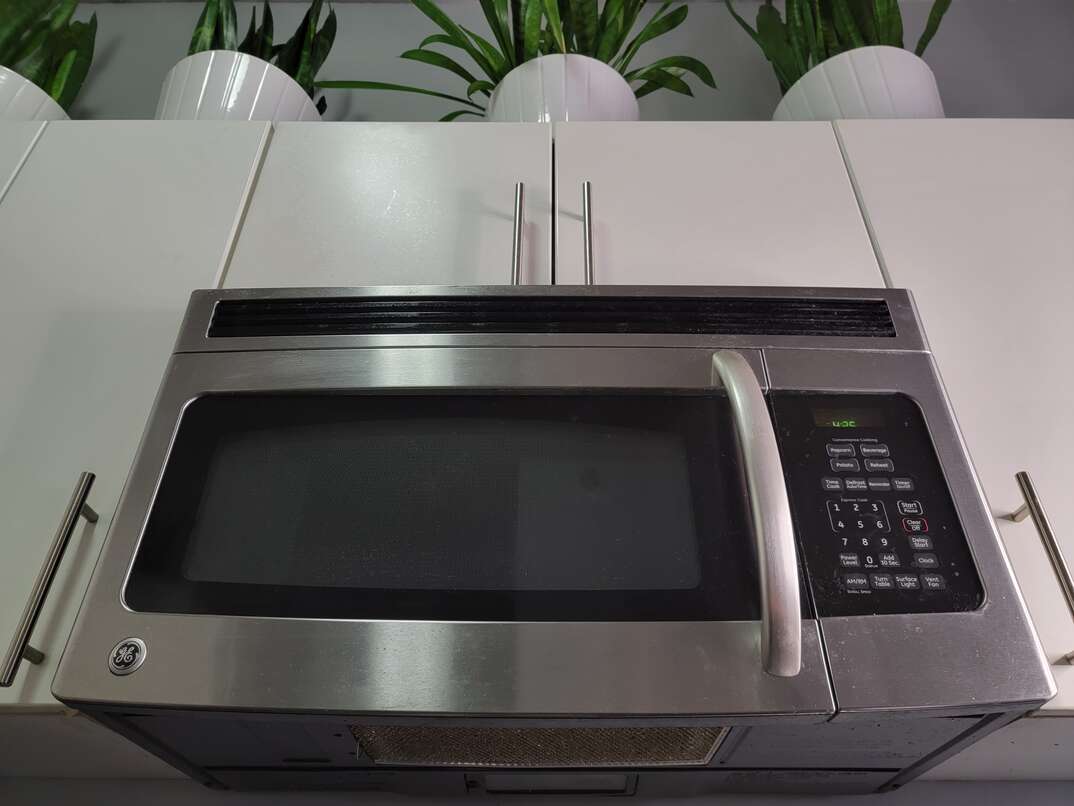How Much Does a Microwave Cost?

Microwave Costs at a Glance
- Budget model: $100-$180
- Mid-range model: $350+
- High-end model: $600-$3,500
- Over-the-range installation: $140-$570
- New vent installation: $150-$500
You can't beat the quick heating and cooking power of a microwave. Your microwave is certainly an appliance you don't want to live without. If you're ready for an upgrade, knowing how much a microwave costs can help you narrow your search. The price can vary significantly, based largely on the size, type of microwave and extra features on the unit.
This May Also Interest You: How to Install an Over-the-Range Microwave
Here’s a breakdown of what you can expect when you buy a new microwave.
How Much Does It Cost to Buy a Microwave?
How much does a microwave cost? The price range varies significantly based on the type of microwave you choose and the features it has. On average, price ranges between $100 and $600, according to HomeGuide. You can find a small, budget model for around $50 or go with a high-end model for $2,000 or more. Countertop models are typically the cheapest options, while over-the-range and built-in microwaves are more expensive.
Budget Models
Low-end models typically cost around $100. Countertop models are the most common option at this price range, but you can find some over-the-range models for around $150 or built-in models for around $180. These options are good when you're on a limited budget, use a microwave infrequently or only want it for basic reheating. They're also popular for dorm rooms.
At this price point, you get a basic model with standard features. They typically have a turntable to rotate the food as it cooks. There might be some special buttons for things like popcorn, baked potatoes and defrost, but you don't get any extra bells or whistles. These models typically don't have ventilation systems, either.
Mid-Range Models
If you want a mid-range microwave, expect to pay around $350. Mid-range microwaves work well for most homes and offer a balance of features and cost. They come with all the same features of a budget model, but they're often more expansive. For example, the shortcut keys might cover more food items, like vegetables, beverages or meat.
Over-the-counter models have an exhaust system to vent your kitchen while you cook. In this price range, the ventilation is fairly standard — usually with only one or two speeds. Recirculating ventilation that runs the air through a filter instead of sending it outside is a common option.
Some mid-range models have extra features, such as racks for extra cooking space, or a child lock to prevent little ones from touching the keypad. You can also find larger models with a higher wattage in this price range.
High-End Models
High-end microwaves start at $600 and can cost up to $3,500. A high-end microwave is ideal when you have a high-end kitchen and want the microwave to fit in well with the rest of the finishes. They come with a range of extra features, so they're also ideal when you have a large budget and want expanded cooking options.
High-end models have the widest range of cooking options. The price increases as you add more features. Some have alternative cooking methods, such as broil, grill, steam and convection cooking. Other features you might find on high-end models include:
- Moisture sensing to adjust your cooking time and power automatically and determine when food is done
- Inverter technology to keep the heat and power consistent when you use a power setting lower than 100%
- Interior LED lighting
- Bluetooth technology in over-the-range models that connects with the range, allowing the fan and light to turn on automatically when you use the range
- Drawer-style microwaves with a sleek, integrated look, sometimes with automatic opening or closing with a button or hand wave
- High-end finishes, such as stainless steel
- Porcelain enamel, stainless steel or other non-porous interior materials to make cleanup easier
- More venting options, including external venting with multiple speeds and higher CFM ratings
- Auto defrost that estimates how long a frozen item needs to thaw
More Related Articles:
- 4 Surefire Methods for Cleaning the Crud Out of Your Microwave
- Everything You Need to Know About Samsung Smart Microwaves: Features and Functionality
- How Much Do Samsung Smart Microwaves Cost?
- Samsung Smart Ranges: Smart Features and How They Work
- How Much Do Samsung Smart Ranges Cost?
How Much Does It Cost to Install a Microwave Over a Stove?
An over-the-range microwave frees up your countertop space and keeps your microwave at a convenient height. You can install it yourself, but it can be challenging and requires two people. Fixr says having a microwave installed over a range typically costs between $140 and $570 with materials and labor. This is a little more than a below-counter or below-cabinet installation since the range location is a little more complicated. You can either hire an electrician or a handyman to do the installation, and the job takes an hour or two to complete.
Budget $150 to $500 if you also need to have a vent installed for the microwave. If you have existing vents that are in good condition, your installer should be able to connect to that ventilation. Some models ventilate the kitchen with recirculating ventilation that doesn't require the installer to connect to an exterior vent.
Does Wattage Affect Microwave Price?
Microwaves are usually between 600 and 1,200 watts, with higher wattages offering more power. The wattage can have an impact on the microwave price. That's mainly because higher-wattage microwaves tend to be bigger, and added size comes with a larger price tag. You can find a range of wattages at every price point, but the higher wattage models are usually more expensive.
How Long Do Microwaves Last on Average?
Microwaves have a shorter lifespan than some other kitchen appliances. They typically last up to 10 years, according to Consumer Reports. Investing in a higher quality microwave can help you get more life out of the unit than a cheap model at the low end of the price range.
You can make it last longer by taking good care of the appliance. Regular microwave cleaning is a simple way to make it last longer. Using preprogrammed settings can prevent you from running the appliance too long. Other ways to make it last longer include closing the door gently, never running it empty, keeping all metal out of the microwave and having repairs done professionally instead of doing them yourself.


